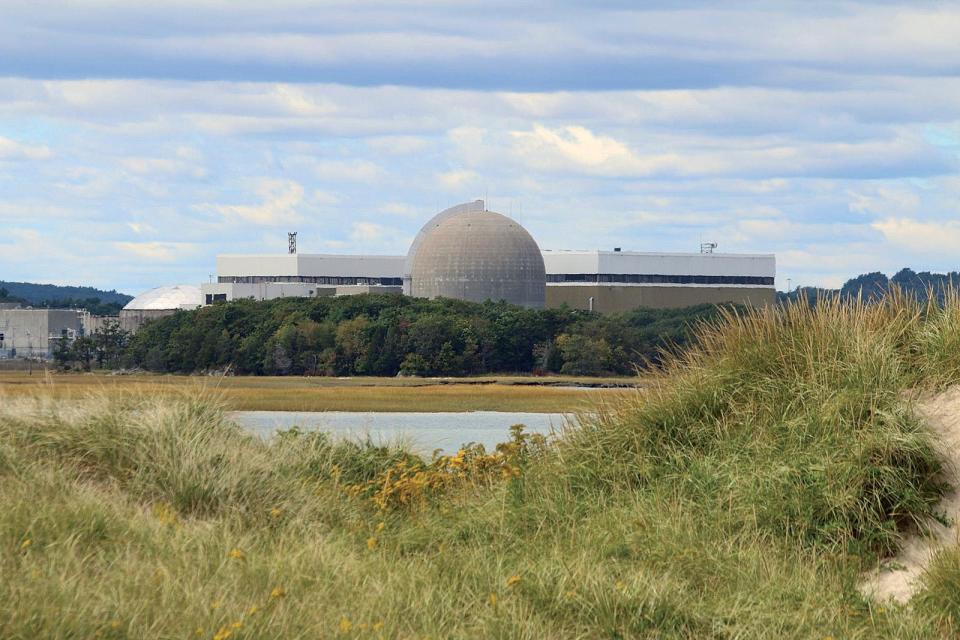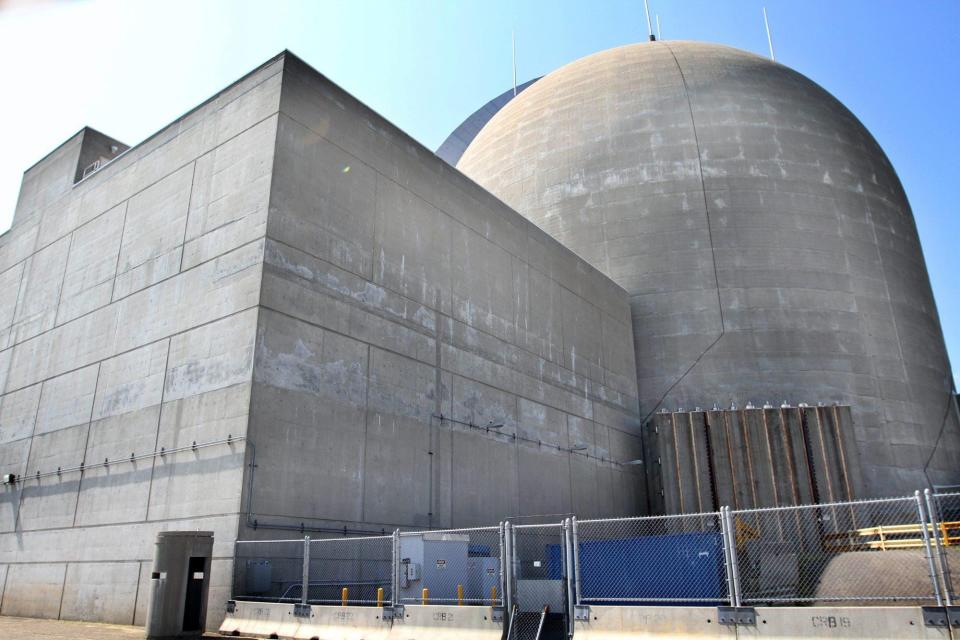Seabrook nuclear plant ends probe on 'human error' false alarm: These changes are planned
SEABROOK — An investigation by NextEra Energy confirmed “human error” was responsible for the false alarm that sounded last month at its nuclear power plant in Seabrook.
NextEra Energy spokesman Bill Orlove said Thursday that new procedures are being established at the plant to ensure it doesn’t happen again and to improve communication gaps discovered during the incident.
Orlove said the company underwent a thorough investigation of the July 12 event that led to the inadvertent activation of its emergency preparedness siren system.

New Hampshire Executive Council member Janet Stevens, R-Rye, previously revealed the specific human error after meeting with nuclear plant officials. She said the inadvertent test siren alarm was "triggered by a siren technician at the nuclear plant ... and the siren technician activated the PA key on the siren control panel — which is located one row directly above the 'silent test' key."
Ten of the 121 sirens sent out verbal alerts along New Hampshire’s coastline beaches telling people to leave the area due to a problem at the power plant. The probe indicated the false alarms took place due to “human error,” during a regular silent testing of the system that had gone on every two weeks for 30 years without any previous problems, he said.
Previous story: Seabrook nuclear plant false alarm exposes gap in NH protocols
Orlove said it is important to note that at the time of the false alarm there was no problem existing at NextEra Energy Seabrook’s nuclear power plant, which was operating normally. He added there was no malfunction of the sirens themselves.
Further, Orlove said, the investigation showed personnel at the power plant “communicated that there was no plant emergency through local, county and state agencies in New Hampshire and Massachusetts, and through local and regional media outlets.”
Seabrook Station implements new protocols
As a result of the investigation, NextEra is putting into effect new procedures to ensure a similar situation doesn’t happen again, Orlove said.
“Seabrook Station and NextEra Energy Seabrook, which operates the facility, has taken the following measures,” according to Orlove. “Revise the process for silent testing of the emergency sirens with additional safeguards, including enhanced oversight to verify test procedures and removing pre-programmed commands for siren activation; retrain staff who test the emergency siren system; increase management oversight during a system test; share our lessons with state partners, who also conduct emergency tests.”

During and after the July 12 event, local officials, emergency responders and the public were critical of the time it took to notify all involved that the alarm was a mistake. It took almost an hour for the state’s Emergency Management Office – the entity responsible for sending out that information to the public – to broadcast a press release that the activation was a mistake. It took about two hours for an alert to be sent to cell phones in the regions letting the public-at-large know of the error.
Sig Sauer beats claim pistol fires itself.: Attorney: 'I know Kyle did not shoot himself'
In the meantime, local officials in beach communities had difficulty confirming the alert was erroneous and had to deal with some people panicking and those who “poured off the beaches,” trying to evacuate the area as the sirens’ message advised.
More reviews of Seabrook incident underway by NH and NRC
On July 19, Tyler Dumont, public affairs officer for New Hampshire Commissioner of Public Safety Robert Quinn, said the time lag related to the fact that the FEMA-approved state emergency management plan for the nuclear power plant did not have a contingency for an inadvertent siren activation at Seabrook Station. However, he said, the department was in the process of creating one.
Quinn, a Seabrook resident, added, “Our team is working diligently to conduct a review of this incident and identifying the shortcomings that contributed to this event.”
Development: 332-unit luxury housing complex at former Seabrook greyhound track rejected
The Nuclear Regulatory Commission, the federal agency which oversees safety, operational and environmental issues at nuclear facilities across the country, said it’s also investigating the July 12 incident at Seabrook Station.
The gap in the state’s emergency plan for Seabrook Station also exposed other issues, such as how best to get out emergency messages in light of modern communication technologies. The sirens’ message informed the public to leave and turn on their radios for more information, but in 2022 radios aren’t seen as the most effective way to communicate emergencies.
NextEra working on improving communication methods
According to Orlove, prior to the July 12 incident, NextEra was looking into that very issue.
“... The company planned to transition to the federal emergency system called IPAWS,” according to Orlove said. “This system is currently used for weather alerts or to communicate an Amber Alert that many cellphone users receive on their device, and transmits messages via local TV and radio stations. It contacts cellphone users by sending a signal to the cell towers located within a certain area. This would ensure that everyone in a specified area, whether they are residents of New Hampshire or Massachusetts or visitors to those states, will receive the message.”
According to the Federal Emergency Management Agency, the Integrated Public Alert & Warning System, or IPAWS, unites the nation’s Emergency Alert System, National Warning System, Wireless Emergency Alerts and National Oceanic and Atmospheric Administration’s Weather Radio under one platform. It’s designed to modernize emergency warnings and accommodates the way society now gets its information.
According to Orlove, NextEra effectively implemented IPAWS at another of its nuclear power plants in Wisconsin and hopes to do the same for its New Hampshire plant in Seabrook.
“At Seabrook Station, our top priority is the safety of everyone living and working in our neighboring communities,” according to Orlove.
This article originally appeared on Portsmouth Herald: Seabrook NH nuclear power plant plans these changes after false alarm

